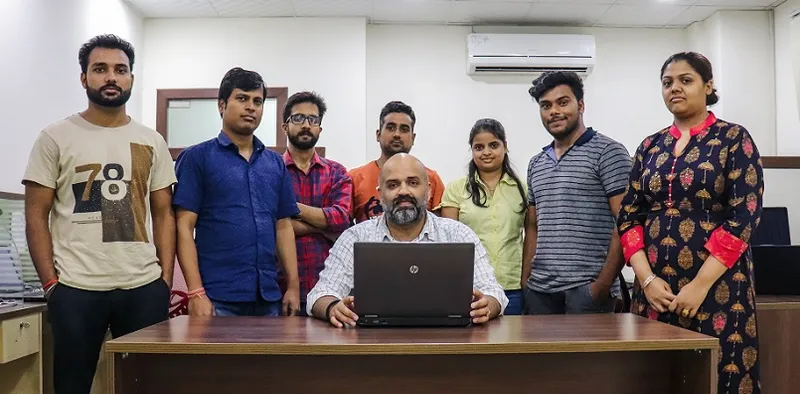Born out of a Thailand holiday, Trekteller’s travel network aims to change the way you explore the world
Trekteller, which claims to have close to 50,000 active users, connects travel lovers from across the world by letting them share photos, blogs, travelogues, and infographics.

Delhi-based friends Nishant Sidhu, 33, and Gurmeet Singh, 32, love travelling. Once, during a holiday in Thailand, the duo bumped into a Thai fisherman who suggested they rent a boat and visit Koh Kradan beach. It turned out to be their best beach experience.
On the flip side, the duo had, like most travellers, faced problems like unscrupulous business practices, untrustworthy online reviews, and unavailability of any means of verifying available information.
Having travelled to more than 25 countries, Nishant and Gurmeet wanted to change the way people travel, or plan their travels. They launched Trekteller, an online platform, in October 2016 to connect travel lovers from across the world based on similar travel interests.
Strategising was not hard. Nishant is a management graduate from Symbiosis International University and a former marketing professional. Gurmeet Singh graduated from The Culinary Institute of America, New York, before completing his master’s degree from Cordon Bleu, Paris.

However, the duo found themselves short of the technicalities required to set up and maintain the platform. Not many were keen to invest skills in a bootstrapped startup. But, Nishant says, the people behind this project have now become a family.
Stories of travel
“Trek” relates to the desire to travel and “teller” is about sharing these travel experiences with others. One needs to sign up with Trekteller and complete their profile to start sharing travel stories, read others’ travel experiences, ask questions about desired travel destinations from people who have already been there, and explore places like a local. The user-generated travel content includes blogs, pictures, travelogues, infographics etc.
Without revealing the number of posts per day by users, Nishant says user engagement on Trekteller spikes during weekends and festival seasons. Investments in Trekteller have been used to enhance the quality of the product by onboarding efficient in-house staff, running digital marketing campaigns, and influential public relations and branding.
Monetisation strategy
Trekteller is a free platform for all users. It aims to monetise itself by creating a product that will increase the total active user base to two million in the next three years. It will cater to travel needs like booking flights, hotels, events, homestays, reviews, payments on-the-go, and various other viable revenue sources, including ad revenue sources.
Currently, Trekteller is not involved in any revenue-generating partnerships. About $200,000 – from the founders’ pocket- has been invested so far in creating Trekteller and extending its outreach. Nishant claims that they are in the process of raising external funding soon, and expects Trekteller to be profitable in 18-24 months.
With 15 people, Trekteller has an in-house team for web content, video editing, software designing (backend and frontend), and software testing. Optimum utilisation of resources is their strategy for minimising cash burn.
“We hire the most suitable candidate for any role that needs to be filled in and sustain employee-friendly conditions within the workplace. This helps us get the maximum out of each employee,” Gurmeet says.
Building value
Trekteller is different from other travel websites as it solely focuses on making travel a better experience by connecting travel lovers, rather than making huge profits. What matters is the number of active users and online traffic across different platforms, the number and quality of posts by users, and the amount of engagement on the posts by users.
Trekteller claims to have close to 50,000 active users now, and says the network is growing fast. It uses different social media platforms, travel influencers, and referral schemes to expand its outreach, besides digital marketing and PR.

Nishant says they start with finding where the real value lies to effectively incorporate customer feedback into the process of product development. He elaborates,
“We collect extensive customer feedback about their experience as a consumer or contributor at Trekteller. Before executing any change in the core or the outlook of the product, we ask some of our most active customers as to what value it might or might not add to the overall user experience. This helps in identifying true customer perspectives and we can have clearer sets of dos and don’ts.”
The global market
According to the United Nations World Tourism Organisation (UNWTO), the estimated number of international travellers at present is 1.3 billion. It is expected to swell to two billion by 2025. The estimated international travel expenditure is pegged at $1.5 trillion, and the total estimated worth of the travel industry as of now is $7.6 trillion, with an estimated annual growth of 4 percent (globally).
The Ministry of Tourism in India says the number of Indian nationals going abroad was approximately 21.87 million in 2016, registering an annual growth rate of 7.3 percent. It stated that the number of domestic tourist visits were 1613.55 million, with an annual growth rate of 12.68 percent.
With the rise of disposable income among youngsters and increasing online exposure, the travel industry is bound to flourish. Trekteller is targeting all travel enthusiasts worldwide within the age group of 18-45, with a special focus on Indian users in cities like Delhi, Bengaluru, Mumbai, Lucknow, Kolkata, etc.
“At the beginning, sales and revenue took a backseat; user interests and a smooth platform for travel networking was our priority. We were more concerned about bringing in this change that we promised to the travel fraternity than reading too much into sales and revenue growth,” Gurmeet says.
That seems to have paid off for the young startup. Based on their estimates, Trekteller expects to garner 171,907 active users by the second quarter of the financial year 2019-2020.







